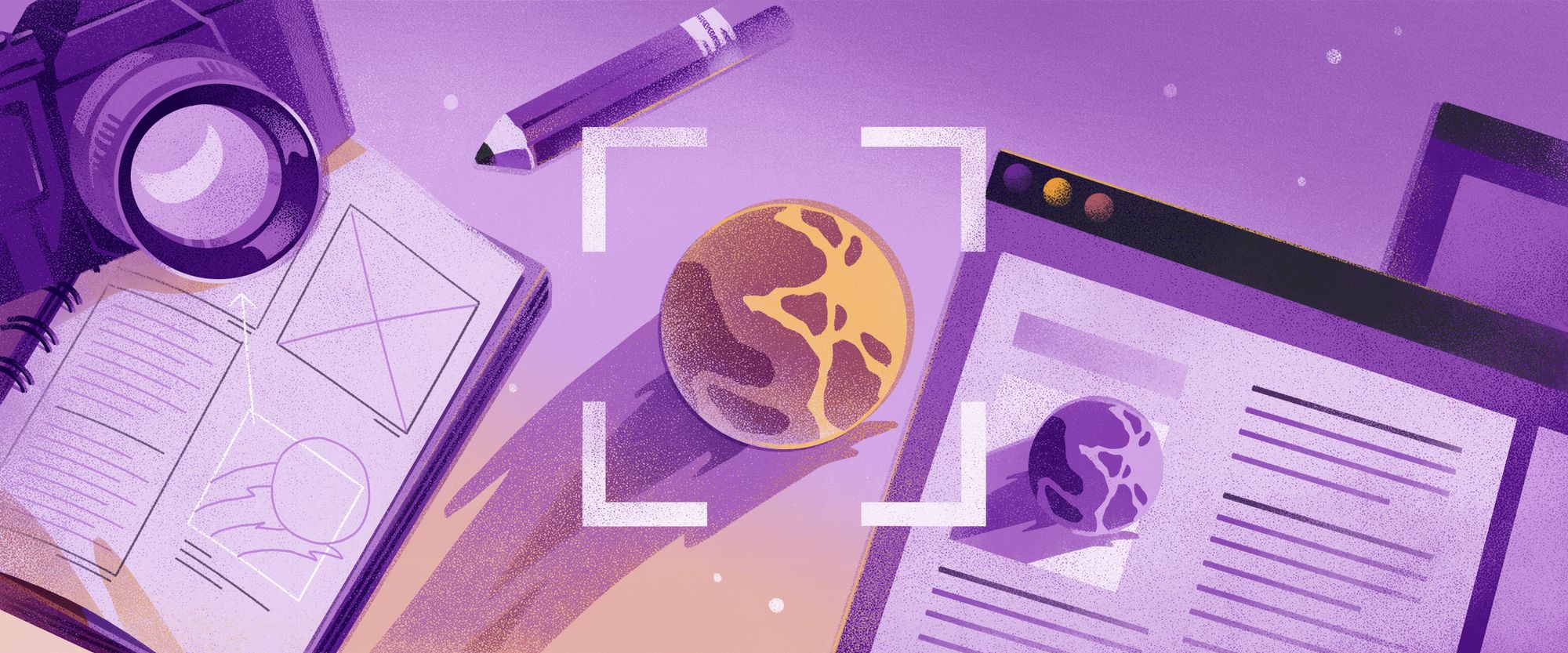This week marks the end of my first month as becoming a freelancer under my own terms, rather than forced by layoffs or scarcity and desperation.
In reflecting on this past month, I’m really content with how things have gone. I earned more money than I expected, I took on a variety of projects, I had more time to do life things. Because this transition has been so seamless for me, it got me thinking:
- How did I actually make this happen?
- I know so many people miserable in their 9-to-5s. Is there something others can draw from my experience that might help them think about alternate career paths?
- Generally, could others benefit from knowing how I did this?
Below, I’ll dig into how I got here, how I’m measuring success, and what is working (and not working) along my journey thus far.
How I got into fractional work
The reality is – especially for those of us who work in tech – nothing is stable. The layoffs of the last year have shown that.
Since April 2020, I’ve always had some freelance job alongside my full-time position, all of which came through past colleagues who remembered my work and that I’m generally nice to work with. There have been times when I had more side income coming in than full-time income, and times when I’ve tapered back freelance either because the jobs weren’t coming in, or I just felt too spent. What those times did though was prove to me that I could do this.
Taking a leap or something better
This year, it became clear to me that I needed to make a shift over to fractional work. I was lucky in some ways:
- A job that I left in 2021 has continued to be a freelance client for all of these intervening years, with no signs of slowing down. That’s a relatively stable retainer that I know could at least pay my mortgage (which is a force of stability in its own right; no fear of eviction or a landlord arbitrarily raising rents).
- I had started at my last full-time job as a freelancer, and so as I was contemplating this shift, we started to have open conversations about it, which made the transition back to freelance with them very easy.
- Lastly and unexpectedly, three ex-colleagues emerged over the month with one-off projects that I’ve been delighted to take on of varying scopes.

Why it’s working
All of that said, I acknowledge the above is potentially unique to my network and me, but there’s a few key takeaways I’d apply here.
1. If you’ve built strong connections over the years, you don’t need to go HAM on new business activities. I, for one, have not. I haven’t posted non-stop to LinkedIn, I haven’t even sent out a wide blast for my services. What I did do was post once to my LinkedIn saying I was taking on new work and post once to my Instagram (different audiences, you never know who needs what and when).
I also just started being more vocal when I saw people in real life about what I’m doing and the kind of work I’d like to take on. For instance, I don’t want another retainer client at this time because I have two and another would just max out my bandwidth and give me no time for other passions. Instead, I tell people about how wonderful it’s been to work on this naming project and how I’ve developed my own signature approach to naming, what that entails, etc.
2. I try to go above and beyond for the clients that I have right now. The best business comes from referrals. My career has shown me that. I’m kind, I often overcommunicate, and I always deliver on time or early.
3. Consider (if you’re anxious like me) overworking at the start. I knew I was going to be plagued by less regular money coming in, a giant new health insurance payment, and just the change in general. I am not a toxic productivity person, but for me as a Type A anxious neurotic, I knew that making this month pretty jam-packed would make me feel comfortable with this more moving forward and less likely to slide back into the desire for full-time.
How I’m measuring success
The first thing I did when I was thinking about this transition was I talked to my accountant. I wanted to get a sense of how to set up my business now that I’m expecting a larger income from fractional, particularly because I’ve had to pay giant quarterly taxes in the past and I want to understand more on a month-to-month basis what I should expect to squirrel away.
Speaking of squirreling away – remember earlier when I said the anxiety thing? I also went into this with six months of salary in my savings, most of which has been saved from freelance jobs I’ve taken on while being a full-timer. The cushion has helped as well, especially because invoicing schedules don’t line up as nicely as my regular biweekly salaried payments.
Anyway, back to my accountant. Because I had already had over three-quarters of a year of full-time salary, my accountant advised not setting up a business entity this year because I will have already met a threshold by which my taxes wouldn’t exponentially increase. He advised starting in June that we would set up an S-Corp and then I would take a salary.

Knowing that I didn’t need to make any major tax moves yet, I just wanted to set some goals for myself. I didn’t approach this with any science at all.
Another way I could have approached this, and I considered it, was to instead look at how much I spend per month and ensure my income covers that with some buffer. That works, too. I think I just wanted to be a little more aggressive in that goal.
This month, I’ll take in just shy of $24,000, which is just a huge win. I’ll break down where that came from without going into specific amounts per client:
- Two retainer clients, both of which were previous full-time jobs that I’ve stayed on with in a fractional capacity. A good tip is to make yourself indispensable (as much as possible) at a job, and to use that as leverage. That sounds like kind of a yucky way of phrasing it, but I don’t see it that way. Do a great job, it’s hard to lose you, and then you have a little more control over what that relationship looks like.
- To note: one of these full-time-turned-fractional jobs I got by just a good ol’ cold resume send. The other I got from a referral from an ex-colleague.
- Three one-off projects, all from ex-colleagues from various points in my career.
I’m preemptively saving half of that for taxes (probably more than necessary but I like to be safe), about $3000 goes to my mortgage and car payments, $700 is for health insurance, a chunk else will go to life/fun/travel, and the rest gets saved for November and December, which will be slower months.
What’s not working
I got sick this past month and had to go to urgent care and then the ER during weekdays. This is the first time in my career that I haven’t been able to take sick time and just be paid for it. Every day, every hour I didn’t work was money that did not come in. What’s more, expensive ER bills (hello $400 copay! Hello $400 ultrasound!) on top of all that. When you’re trying to mute the productivity culture vultures that are picking at your brain, trust that this was a hard pill to swallow.

That said, this is where that six month cushion put me at ease. I took off two full days to get better (I would have taken more if I needed to), and then when I was feeling more able-minded, I worked a little extra on the weekends to make up for the hours lost. I think in total, I probably lost a day’s worth of income, which I’m very grateful to say is not a dealbreaker at this point in my career.
But my big takeaway was that in lieu of having a certain amount of sick days per year, I need to plan that I will just inevitably take some, whether that’s an acute illness or just a mental health day off.
What’s keeping me up at night
I’m a little nervous about the holiday season. I’m anticipating at least two to three weeks of lighter work at a general high-spend time of the month, and that’s not too fun to think about.
I’m also wondering if/when I increase my rates. I’ve worked at $150/hr for the last three years, while inflation has soared. It probably means I should start ticking that rate up, but I’m also aware that many of the businesses in my sector are tightening budgets and dealing with these macroeconomic factors as well. I’m guessing at some point in 2024 I’ll increase rates, but I’m not struggling at this rate right now, so I think I’ll just call myself lucky on that.

On the more fun side – I’ve had so many wonderful friends and former colleagues refer me work this year, so I want to get them something thoughtful for end of year. I truly wouldn’t be in this position without them, so gift giving is front-and-center.
As someone with a fairly singular name, I don’t want to underestimate the importance of what happens when someone Googles me. I’m not out here as a Jane Smith that can hide amongst all the other Jane Smiths in the world. How do I keep my personal SEO in a good shape and ensure that I’m happy with my page one results on Google? Good news is, there are some very practical tips right here to solve this particular problem.


